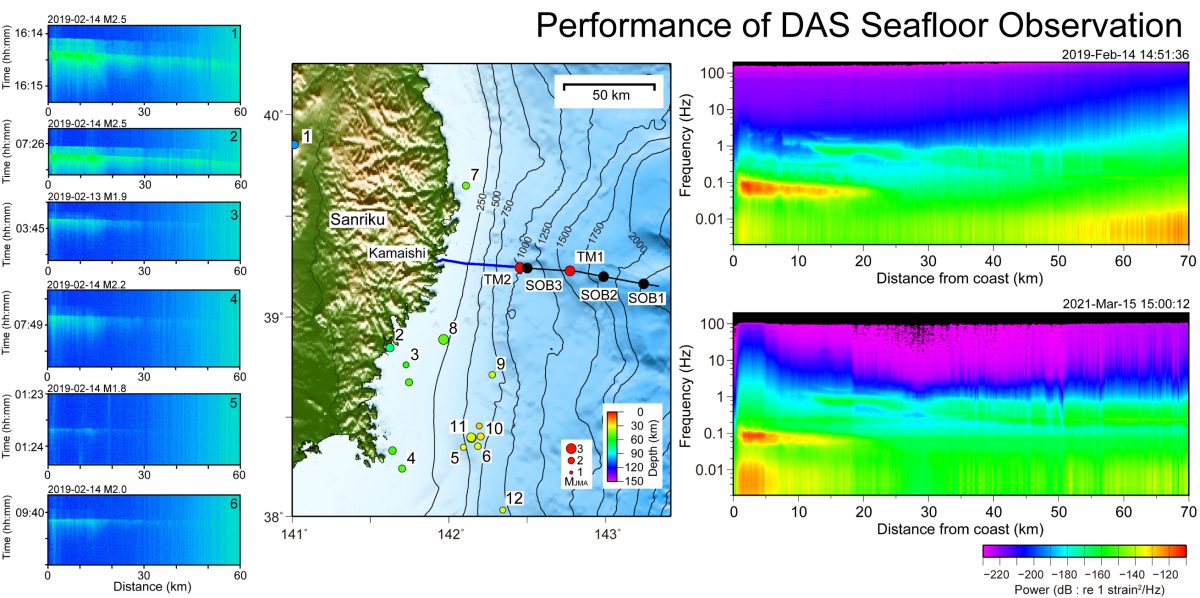Masanao Shinohara1*, Tomoaki Yamada1, Takeshi Akuhara1, Kimihiro Mochizuki1 and Shin’ichi Sakai2,1
1 Earthquake Research Institute, The University of Tokyo, 2 Interfaculty Initiative in Information Studies, The University of Tokyo
Front. Mar. Sci. 9:844506. doi: 10.3389/fmars.2022.844506
Recently distributed acoustic sensing (DAS) measurement which utilizes an optical fiber itself as a sensor becomes popular for various fields and is being applied to seismic observations. The shortest spatial sampling of DAS observations reaches a few meters, and the total measurement distance becomes greater than 50 km. A high temporal sampling rate is achieved. Due to these characteristics, a DAS measurement allows for a dense seismic observation as a linear array. Applying a DAS measurement to the seafloor cable is advantageous because the quantity of data can be significantly increased in marine area. A seafloor seismic tsunami observation cable system using an optical fiber for data transmission was deployed off Sanriku by the Earthquake Research Institute, the University of Tokyo in 1996. This seafloor cable observation system has spare fibers for extension. Beginning in February 2019, we made several DAS observations using spare fibers of the seafloor system. Consequently, many earthquakes were recorded. Small earthquakes with a magnitude of 1.8 occurring near the cable system were recorded by the DAS system. Arrivals of P- and S-waves of the earthquake with a magnitude of 3 were clearly seen using the phase data from the DAS measurement. In addition, a teleseismic event with an epicentral distance of about 2,300 km and a magnitude of 6.6 was clearly observed. Because there are conventional seismometers in the Sanriku cable system, we compared records from the DAS measurement with those from the seismometer. The DAS records and the data by the seismometer showed a high coherency. Noise levels of the DAS measurement were evaluated and there was little temporal variation of the noise levels. A spatial variation of ambient seismic noises was revealed using a spatially high-density observation with a long distance. In November 2020, a seismic survey using the DAS system and airguns was carried out, and the DAS system clearly recorded signals from the airguns. We also compared these data from the DAS system with that of the seismometer. Both records had the same characteristics, although P-wave arrivals on the DAS records have smaller amplitude.
Figure caption
Left: Data of local earthquakes recorded by the DAS measurement using the Sanriku cable system in February 2019. Right: Spatial variation of ambient noise spectra on the seafloor obtained by the DAS measurements in February 2019 (upper) and March 2021 (lower).


